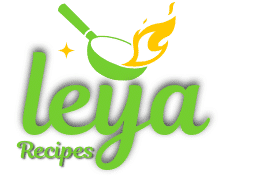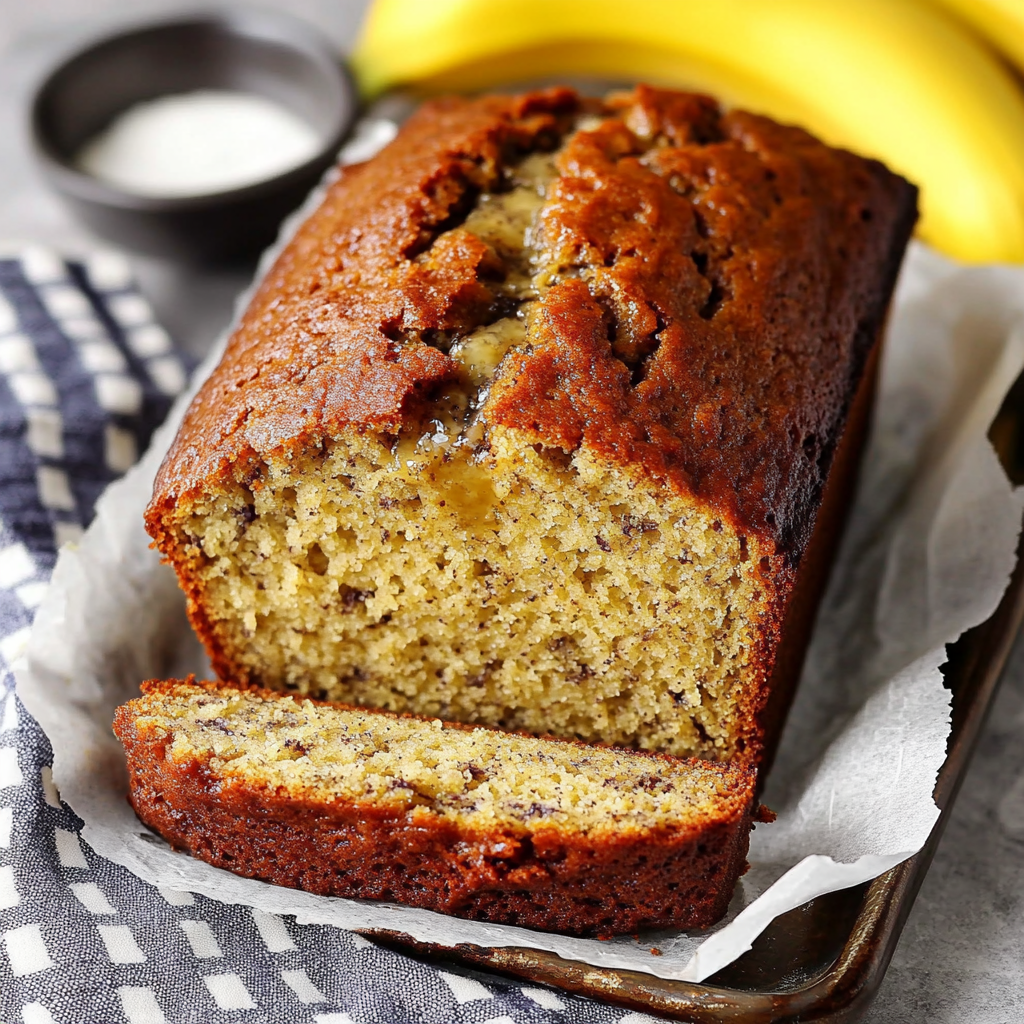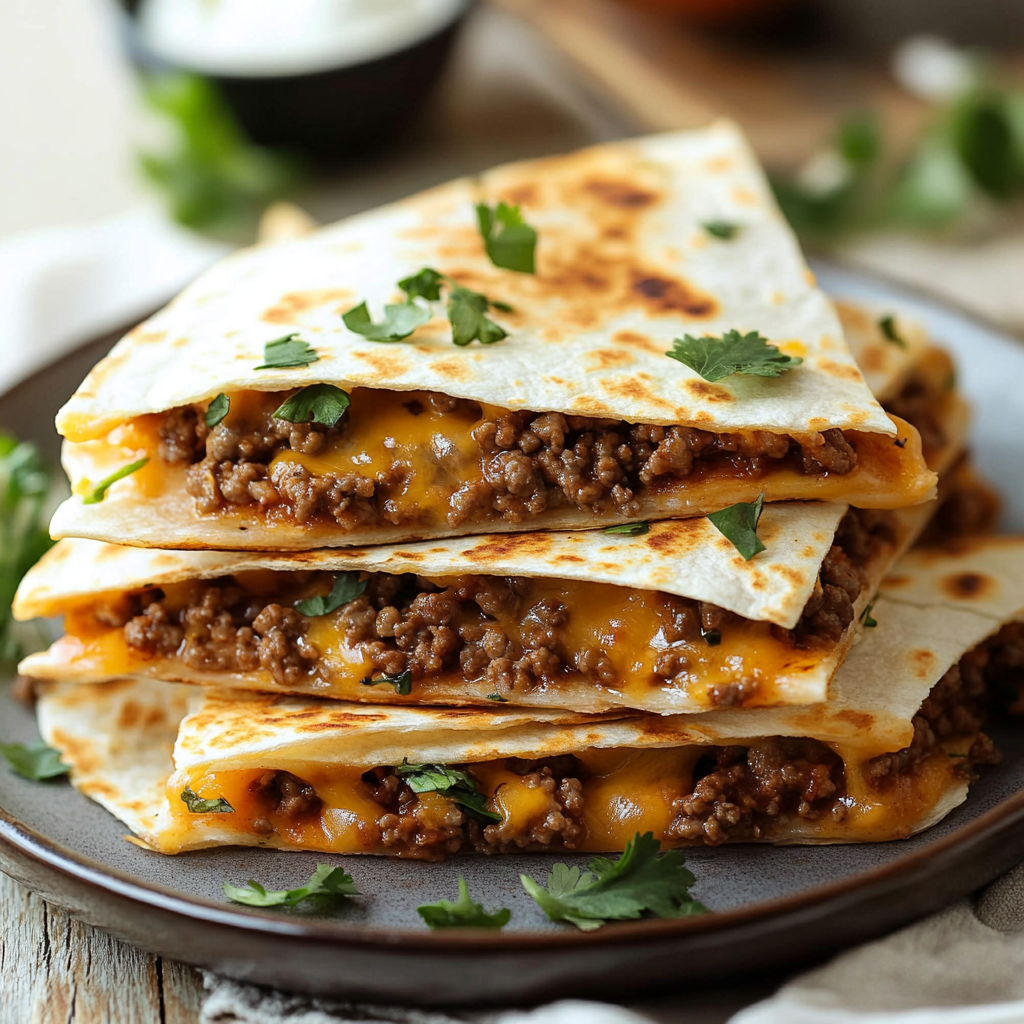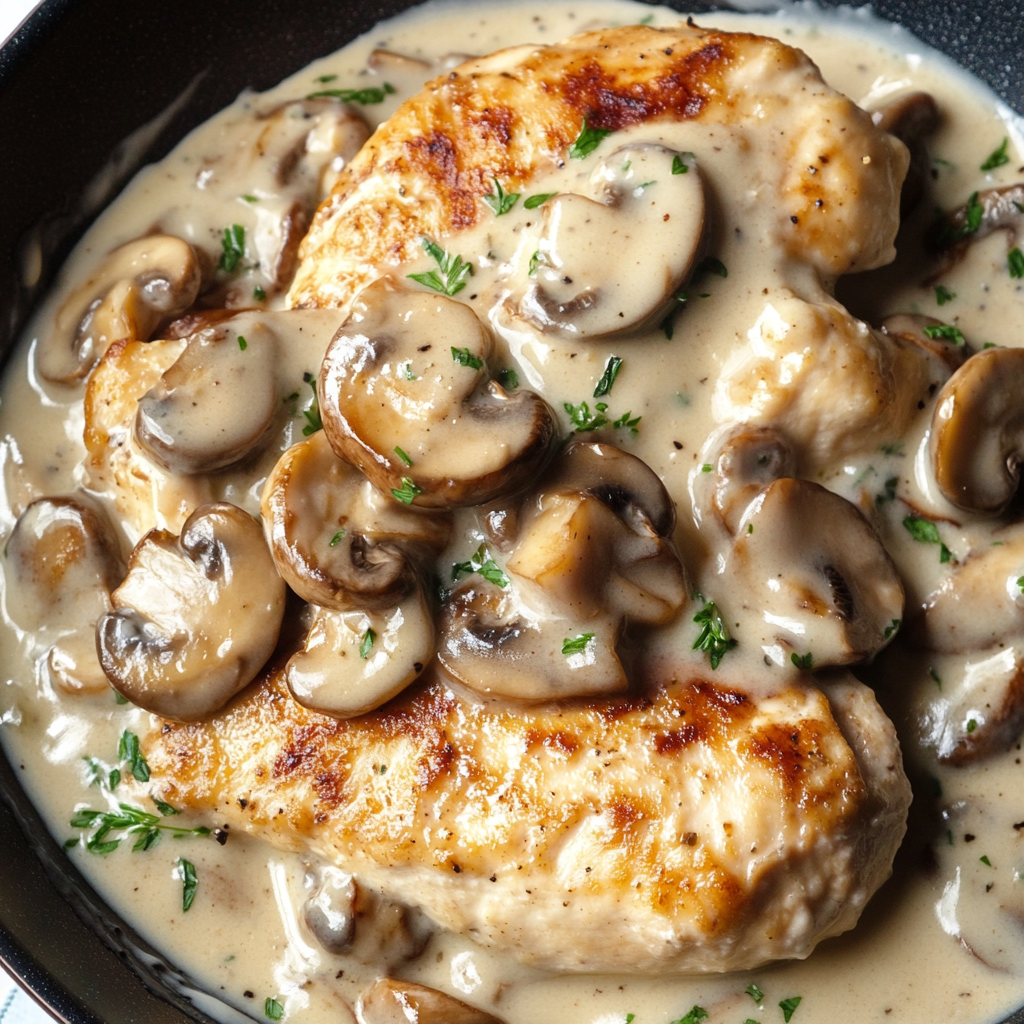The classic banana bread is a timeless staple that never fails to impress. With its golden crust, tender crumb, and rich banana flavor, it’s the kind of recipe that brings warmth and nostalgia with every bite. This version keeps things simple but incredibly satisfying, using ripe bananas, pantry staples, and no-fuss steps to create the perfect loaf.
Whether you’re enjoying it for breakfast, snacking with your afternoon tea, or toasting a slice with butter for dessert, this banana bread is one of those dependable go-to recipes you’ll make again and again. The sweet aroma alone will have everyone wandering into the kitchen.
Full Recipe
Ingredients:
-
3 ripe bananas, mashed
-
1/2 cup unsalted butter, melted
-
3/4 cup granulated sugar
-
1 egg, beaten
-
1 teaspoon vanilla extract
-
1 teaspoon baking soda
-
Pinch of salt
-
1 1/2 cups all-purpose flour
Directions:
-
Preheat your oven to 350°F (175°C). Grease a 9×5 inch loaf pan or line it with parchment paper.
-
In a large mixing bowl, combine the mashed bananas and melted butter. Stir until smooth.
-
Mix in the sugar, beaten egg, and vanilla extract until fully incorporated.
-
Sprinkle the baking soda and salt over the mixture and stir in.
-
Add the flour and stir just until the batter is combined. Do not overmix.
-
Pour the batter into the prepared loaf pan and smooth the top with a spatula.
-
Bake for 50–60 minutes, or until a toothpick inserted into the center comes out clean.
-
Let the banana bread cool in the pan for 10 minutes before transferring to a wire rack to cool completely.
Prep Time: 10 minutes | Cooking Time: 55 minutes | Total Time: 1 hour 5 minutes
Kcal: 210 kcal | Servings: 8 slices
Introduction to Classic Moist Banana Bread
Banana bread is one of those universally loved baked goods that seems to exist in every kitchen, cookbook, and cherished memory. It’s simple yet rich, humble yet satisfying, and endlessly versatile. The classic moist banana bread recipe is a staple in households for a reason—it takes minimal effort, makes use of ripe bananas that might otherwise go to waste, and results in a warm, fragrant loaf that pairs beautifully with coffee, tea, or even just a moment of peace at the kitchen counter.
Unlike many pastries that require specialty ingredients or time-consuming techniques, banana bread is approachable. You don’t need to be a professional baker to master it. In fact, it’s often the first thing many home bakers learn to make. It’s forgiving and adaptable, which is why it has stood the test of time. A well-made banana bread has a slightly crisp edge, a soft and tender interior, and a deep, sweet banana flavor that can only come from fruit at peak ripeness.
Why Banana Bread Is a Timeless Favorite
One of the reasons banana bread is so cherished is its deep sense of nostalgia. For many, it’s a dish tied to childhood memories—helping a parent mash bananas in a bowl, the smell of vanilla and butter filling the kitchen, or enjoying a slice fresh out of the oven with melting butter. These emotional connections elevate banana bread beyond just a baked good.
Another reason for its popularity is practicality. Bananas ripen quickly, and rather than discard them when they turn brown and spotty, banana bread offers a delicious solution. It’s the original “zero waste” kitchen hack, turning overripe fruit into something delightful. In a world where food waste is a growing concern, having an easy and tasty use for aging bananas is not only smart but also satisfying.
The Perfect Texture and Flavor
The hallmark of a great banana bread lies in its texture—moist but not soggy, tender yet not crumbly. Achieving this balance requires just the right ratio of wet to dry ingredients and proper mixing. Overmixing can result in a dense, rubbery loaf, while undermixing leaves you with uneven pockets of flour. When made correctly, each bite is soft and rich, with a mellow banana sweetness and a buttery depth that lingers on the palate.
Flavor-wise, ripe bananas are the star. Their sugars are fully developed, which enhances the sweetness and aroma of the bread. When combined with a touch of vanilla and just enough sugar, the banana flavor shines through without becoming overpowering. Some recipes add cinnamon, chocolate chips, or nuts, but the classic version keeps it pure and lets the natural fruit flavor take the spotlight.
How to Customize Your Banana Bread
One of banana bread’s most endearing qualities is its adaptability. While the classic moist banana bread recipe is perfect as-is, it also serves as a blank canvas for bakers to experiment. Want a little crunch? Fold in some chopped walnuts or pecans. Craving a hint of indulgence? Mix in a handful of chocolate chips or swirl in a spoonful of Nutella.
You can also experiment with flours—substitute half of the all-purpose flour with whole wheat for a nuttier taste and a boost in fiber. Or go gluten-free with a 1:1 gluten-free baking mix. Add-ins like shredded coconut, dried cranberries, or even a sprinkle of sea salt on top before baking can create delightful variations on a classic theme.
For those avoiding refined sugar, natural sweeteners like honey, maple syrup, or coconut sugar can be used in moderation. You can even boost the nutrition by adding ground flaxseed or a scoop of protein powder to the batter. The options are endless, which makes banana bread a go-to recipe for both traditionalists and creative home bakers alike.
Serving Suggestions and Storage Tips
Banana bread is incredibly versatile when it comes to serving. Enjoy it warm with a pat of butter for breakfast or brunch. Pair it with a dollop of Greek yogurt and honey for a more balanced snack. It can even be served as a simple dessert, perhaps with a scoop of vanilla ice cream or a drizzle of caramel sauce.
For those who enjoy meal prepping or gifting baked goods, banana bread is ideal. It keeps well at room temperature for up to 3 days, and it can be stored in the refrigerator for up to a week. Simply wrap it in plastic wrap or foil and place it in an airtight container. You can also freeze banana bread for longer storage. Slice it before freezing for easy grab-and-go portions—just warm a slice in the toaster or microwave when you’re ready to eat.
Banana Bread as a Comfort Food
There’s something deeply comforting about banana bread. Its aroma while baking is almost therapeutic—warm, cozy, and inviting. It signals calm and familiarity, something homemade in a world that often moves too fast. This emotional layer is what elevates banana bread from being just another recipe to a ritual of care. It’s a dish made with love, often shared with family, friends, or neighbors.
Whether it’s baked for a weekend breakfast, a midweek treat, or as a thoughtful gift, banana bread represents a gesture of warmth. Its ability to comfort and satisfy makes it a constant presence in both everyday kitchens and special moments. In many ways, banana bread is the edible equivalent of a handwritten note—it feels personal and thoughtful.
Healthier Takes and Dietary Considerations
For those mindful of their diet, banana bread can be modified to fit a range of nutritional needs. Reducing the sugar, using whole grain flours, and substituting part of the butter with applesauce or Greek yogurt are all easy ways to make it a bit healthier. Vegan banana bread versions are also popular, often using flax eggs and plant-based butter or oil.
Low-carb or paleo variations might include almond flour or coconut flour and use sweeteners like erythritol or stevia. These adaptations make banana bread accessible for people with different dietary restrictions or preferences. What’s more, you don’t need to compromise on flavor—even the healthier versions, when done right, offer the same moist texture and rich banana essence.
Banana Bread in Baking Culture
The surge in banana bread popularity during the early months of the global pandemic showcased its cultural significance. As people turned to baking for comfort and stability, banana bread became a global trend. It was easy, accessible, and comforting—a form of self-care when the world felt uncertain.
This surge reintroduced banana bread to younger generations and reminded seasoned bakers of its timeless charm. It became more than just a quarantine trend; it reasserted itself as a household staple that brings people together. Online, banana bread recipes were swapped, shared, and customized, creating a virtual community bound by the love of this humble loaf.
Conclusion
Classic moist banana bread is more than just a recipe—it’s a tradition, a comfort, and a celebration of simplicity. It uses everyday ingredients to create something extraordinary. Whether you’re baking it for the first time or the hundredth, its warm aroma and soft texture never fail to bring joy.
Its adaptability means you can make it your own with endless variations, yet the core experience remains unchanged: a warm slice of banana bread, perfectly moist, subtly sweet, and made with love. This is why banana bread continues to hold a special place in kitchens around the world—it’s not just food, it’s a feeling. So the next time your bananas go spotty, don’t throw them out—bake up some memories instead.








